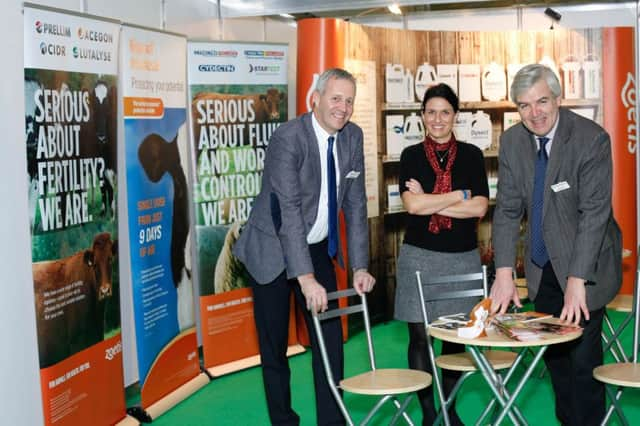Calf health, fertility and dry cow therapy


Aurelie Moralis, Veterinary Consultant with Zoetis points out that 67% of calf pneumonia cases occur during the first three months of life.
Therefore it is important to provide the earliest protection available against the two key viruses which cause pneumonia in young calves – BRSv and Pi3v.
Advertisement
Advertisement
Perhaps the most alarming aspect of respiratory disease is that some calves will be infected but not show obvious clinical signs and will therefore go unnoticed yet the underlying lung damage can be limiting growth rates and negatively impacting the lifetime productivity of the animal.
In dairy heifers poor respiratory health has the potential to increase age at first calving by two weeks, and reduce first and second lactation yields.
Aurelie adds: “Early life protection against viral pneumonia also helps reduce the threat from secondary bacterial infections such as Pasteurella.”
Fertility is a major topic on dairy farms as it has the potential to increase profits through more cows in milk resulting in increased yields and numbers of calves born. The use of progesterone devices in breeding protocols is gaining popularity.
Advertisement
Advertisement
Adequate progesterone concentrations prior to ovulation will promote good oestrus behaviour. Often high yielding dairy cows will show poor signs of heat even after an injection of PGF2α on its own, targeted at the right time in their cycle. Those same cows generally would have shown much better heats after combining PGF2α (Prellim®) with a progesterone device (CIDR®).
In summary, the use of breeding protocols, which are successful in both the cycling and non-cycling cows, allows synchronisation and control of the cow’s oestrus cycle. This can help farmers achieve a 100% submission rate, resulting in an increased pregnancy rate, reduced calving interval and better productivity.
The dry period of the dairy cow represents a significant risk, with up to 60% of all new intramammary infections acquired during this period.
As all cows are susceptible to new dry period intramammary infections, they can all benefit from the use of a dry cow intramammary teat sealant such as OrbeSeal® which mimics the cow’s natural keratin plug, preventing mastitis causing bacteria from entering the teat during the entire dry period, and protecting the udder at the most vulnerable times, which are the start and the end of the dry period.
Advertisement
Advertisement
While all cows will benefit from the use of OrbeSeal® to reduce the likelihood of cows picking up new infections during the dry period, some cows without existing infection may not need an antibiotic treatment as well. Deciding which cows are uninfected and could be dried off with OrbeSeal® alone is a major factor. Zoetis staff at the Winter Fair will be happy to advise on the information you need to be able to decide in conjunction with your vet which cows are likely to be uninfected. Information around the optimum infusion technique for dry cow therapy will be available as well.
This is a very important topic as milk buyers are responding to calls for a decrease in the use of antibiotics on farm with one leading buyer in GB already halfway through a programme with its supplies to have 10% of cows dried off without antibiotics in three years’ time.